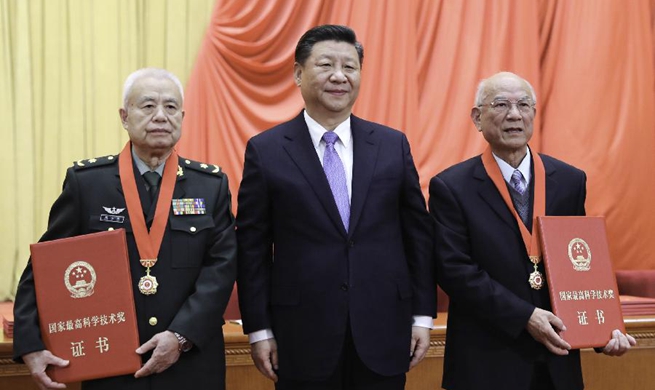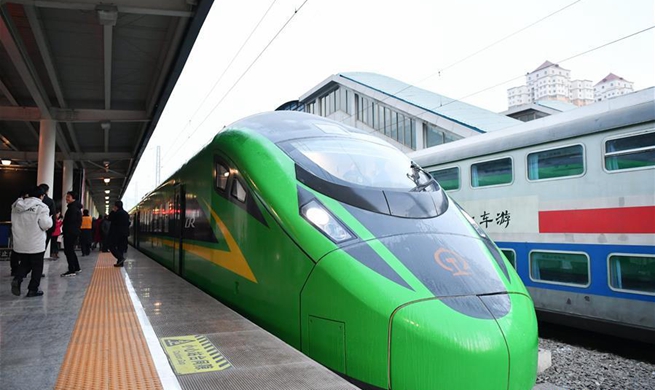CHANGSHA, Jan. 9 (Xinhua) -- Authorities in central China's Hunan Province are using facial recognition to help vagrants and beggars return home.
On the last day of 2018, Tang Yaowu, 33, was reunited with his family after losing contact more than four years ago.
The employees of the homeless shelter in the city of Yongzhou found Tang, who suffers from a mental disability, on the street in June 2014. He did not know who he was or where he was from.
The shelter published his photo and relevant information in newspapers and in a popular news service app toutiao.com, hoping to find his relatives; however, their efforts failed.
In October 2018, the shelter started cooperating with the local public security bureau, using facial recognition technology to help identify vagrants and beggars.
The police quickly found Tang's information, and the shelter contacted his father on December 31.
"I've looked for my son for more than four years. I thought I would never see him again," said his father Tang Chunhua, 63.
He said his son lost contact with the family at a bus station in the city of Shaoyang about one month before he was sent to the shelter in 2014.
Facial recognition, new media, and big data are among the latest technologies Chinese authorities are using to help vagrants and beggars return home.
Thanks to facial recognition, the shelter has helped 35 unidentified people find their relatives since October.

















